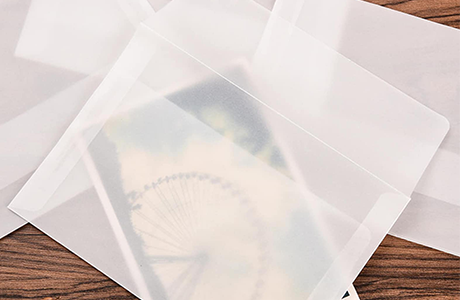The production of tracing paper requires careful selection of raw materials and precise processing techniques to achieve its signature transparency, smooth surface, and strength. Unlike standard paper, tracing paper is engineered to allow light and images to pass through while still offering enough structural integrity for drawing, printing, or drafting.
Raw Materials Used in Tracing Paper
Cellulose Fiber (High-Purity Wood Pulp):
- The base material for tracing paper is typically high-grade cellulose fibers derived from wood pulp, cotton linters, or a blend of both.
- These fibers are highly refined to remove impurities such as lignin, which would otherwise interfere with the transparency.
- In most cases, bleached kraft pulp or chemical pulp is used to achieve high brightness and uniform fiber quality.
Additives (Optional):
- In some formulations, wet-strength resins, sizing agents, or plasticizers may be added to improve strength and resistance to tearing, especially when the paper is exposed to ink or moisture.
- Some premium tracing papers are made acid-free or pH-neutral to improve archival properties.
Processing Techniques
The manufacturing process is what transforms standard pulp into the translucent, smooth sheet we know as tracing paper. There are three main techniques used to achieve transparency:
1. Over-Beating (Mechanical Refinement)
- The pulp fibers are mechanically beaten or refined far more than in standard paper production.
- This process breaks down the fibers into finer lengths and causes them to swell, becoming gelatinous.
- The resulting paper has very little air space between fibers, which greatly reduces light scattering—this is the key to optical transparency.
- While this enhances clarity, it also makes the paper more brittle if not handled properly, which is why a balance between strength and translucency is critical.
2. Supercalendering (Pressing and Polishing)
- The formed paper sheet is passed through a series of supercalender rolls, which are heated and highly polished metal rollers.
- This compresses the sheet, polishing the surface and further flattening the fibers, increasing translucency and giving the paper a smooth, glossy finish.
- Supercalendering also improves surface uniformity, making the paper suitable for fine line work with pens or technical tools.
3. Chemical Modification (Saturation or Transparentizing Agents)
- In some manufacturing methods, paper is made transparent by impregnating the sheet with a transparentizing agent such as oil, wax, or resin.
- Modern tracing papers typically avoid these additives due to concerns about yellowing, chemical odor, or ink incompatibility.
- Instead, chemical treatments may involve mild acid or solvent-based processes that modify the cellulose structure to reduce opacity without leaving a residue.
Alternative Materials (Premium Grades)
- High-end or archival tracing papers may use 100% cotton fibers (rag content), which provide excellent strength, smoothness, and aging stability.
- These are often used in architectural drafting, technical documentation, and fine art applications.
Environmental Considerations
- Manufacturers may use FSC-certified or sustainably sourced pulp to produce environmentally responsible tracing paper.
- Some brands now offer recycled tracing paper, though it is more difficult to achieve the same level of transparency and smoothness without virgin fibers.

Tracing paper is produced primarily from highly refined cellulose fibers, processed through mechanical beating and supercalendering to reduce light scattering and achieve optical clarity. In some cases, chemical modification is also used to enhance transparency. The result is a paper that is thin, translucent, smooth, and durable—ideal for technical and artistic purposes. The combination of material purity and precision processing is what sets tracing paper apart from standard paper types.

 English
English عربى
عربى Español
Español



















